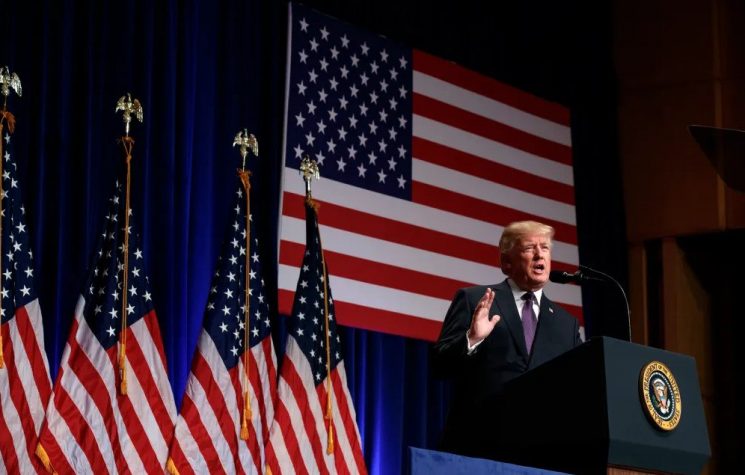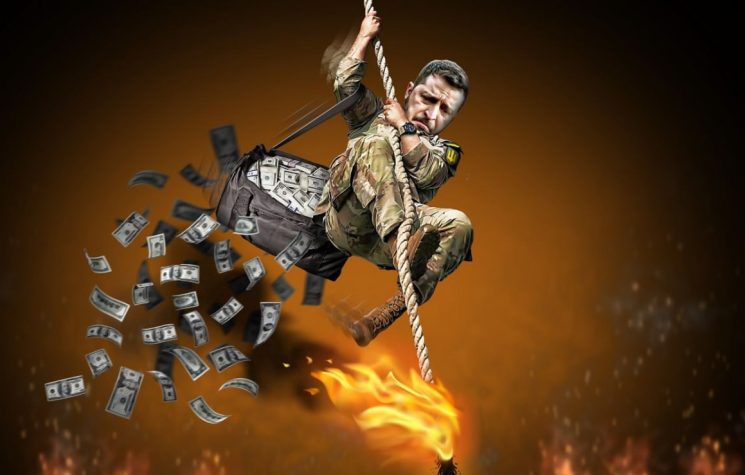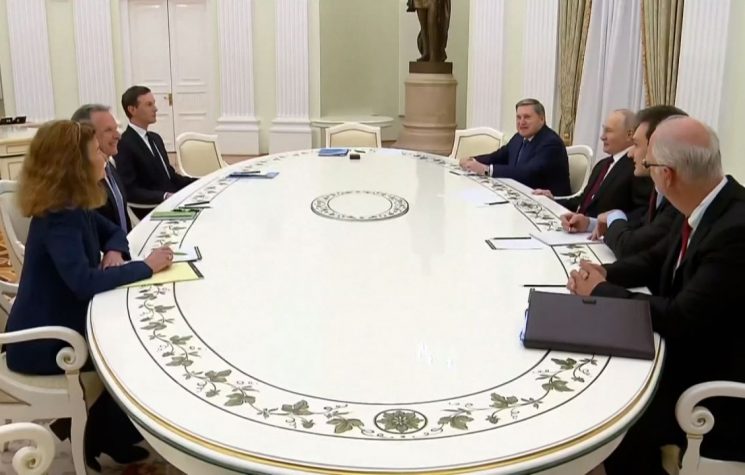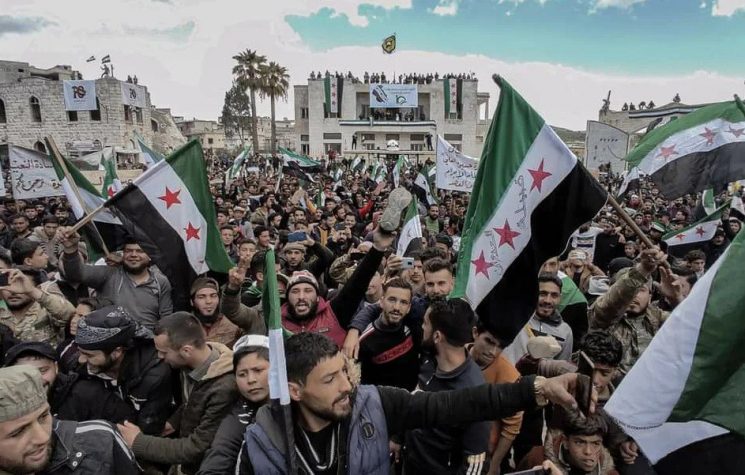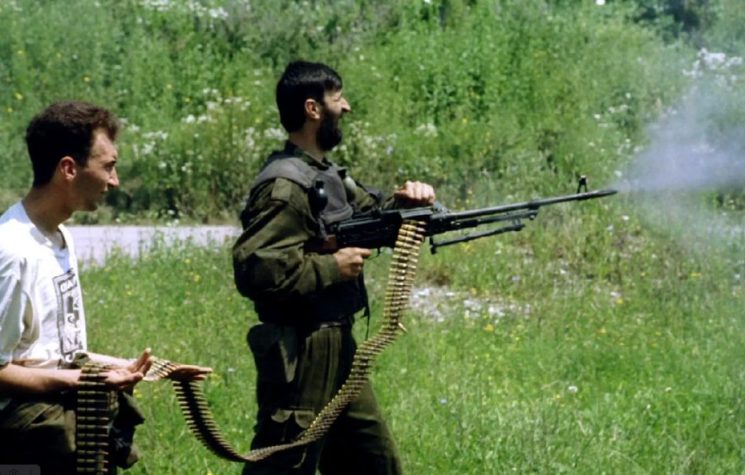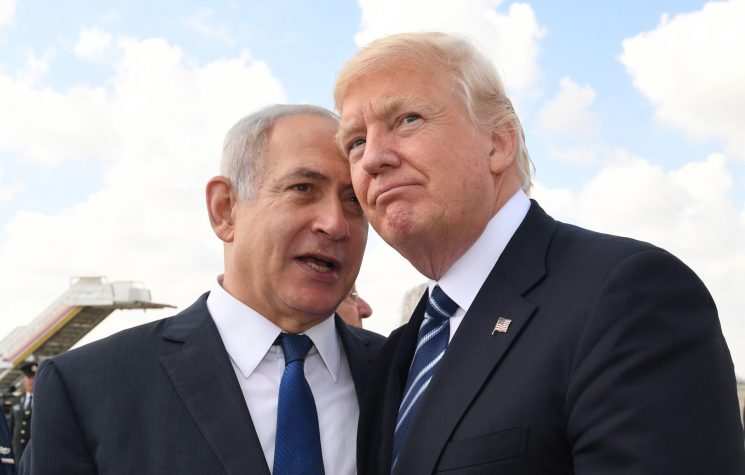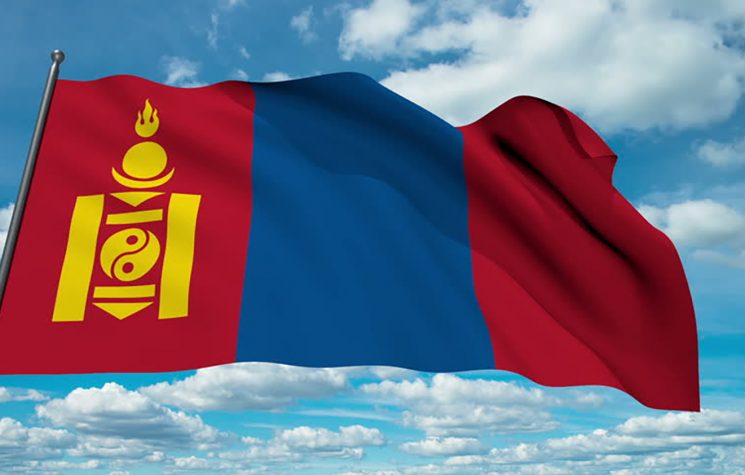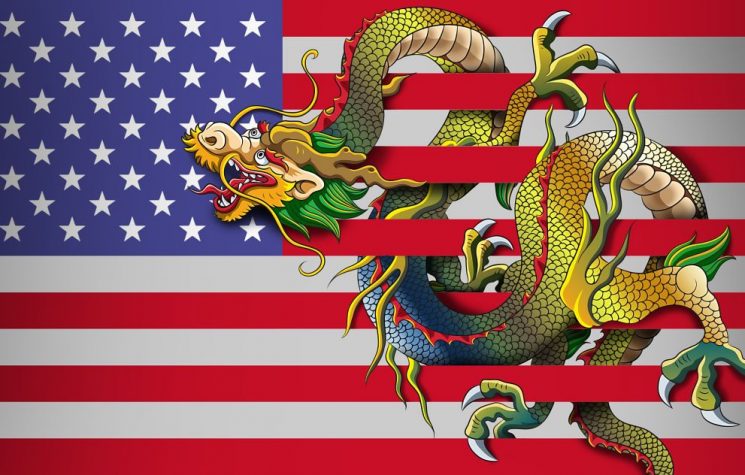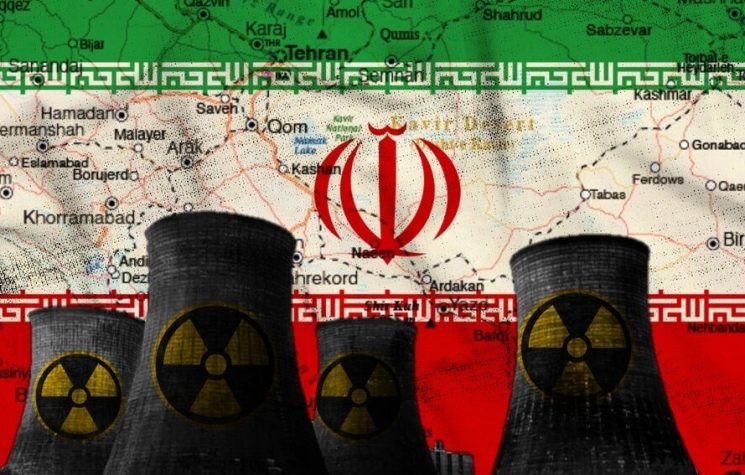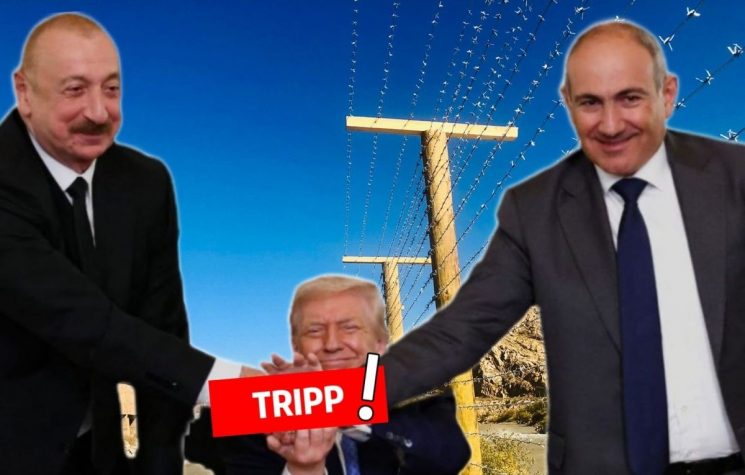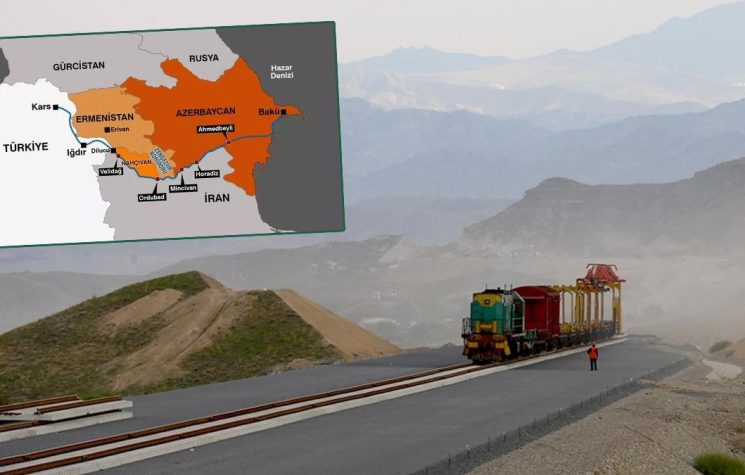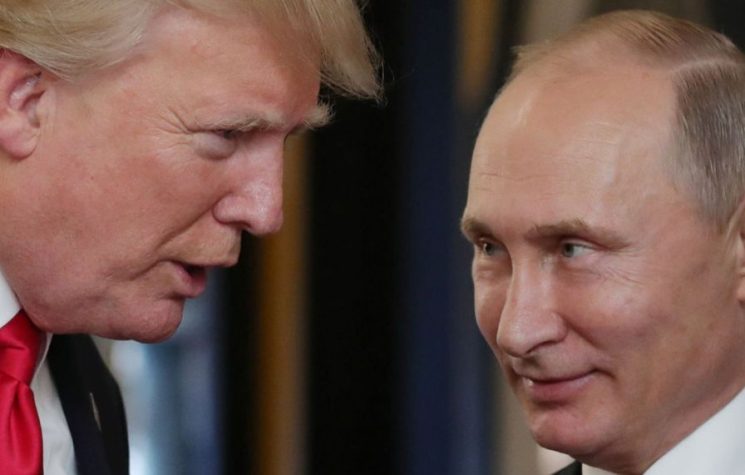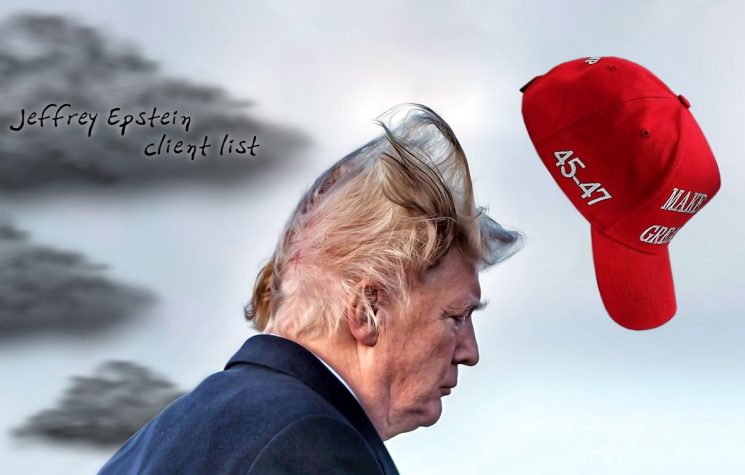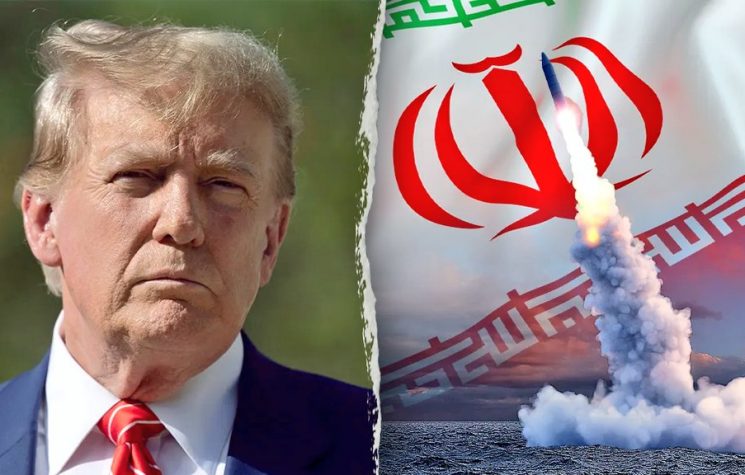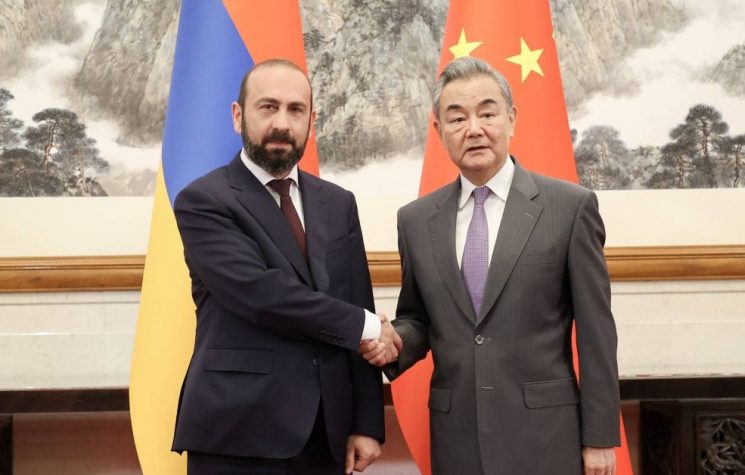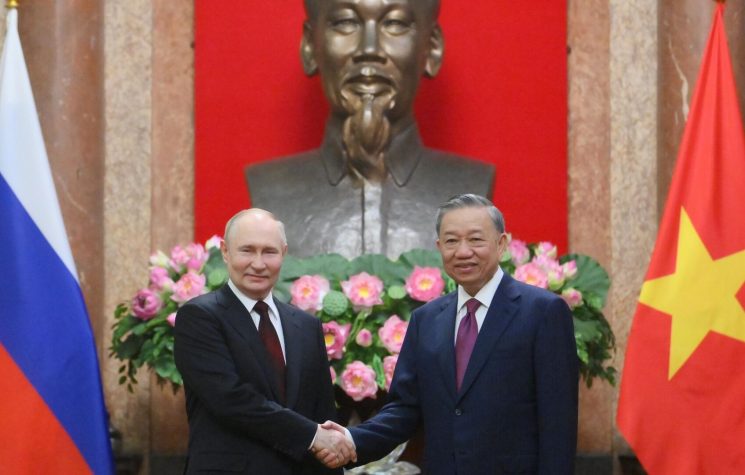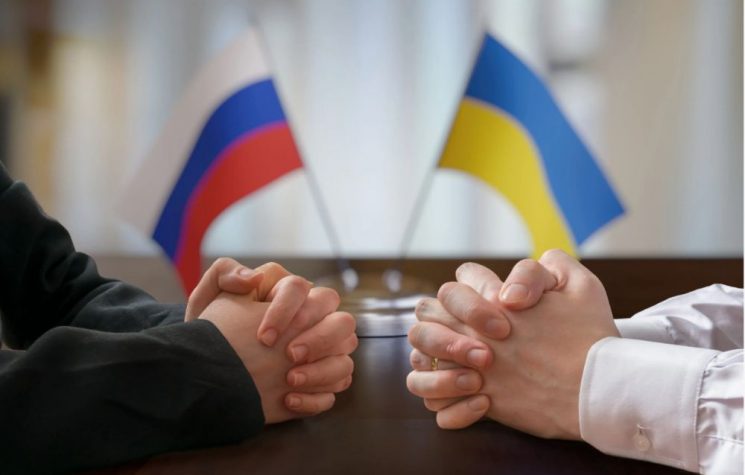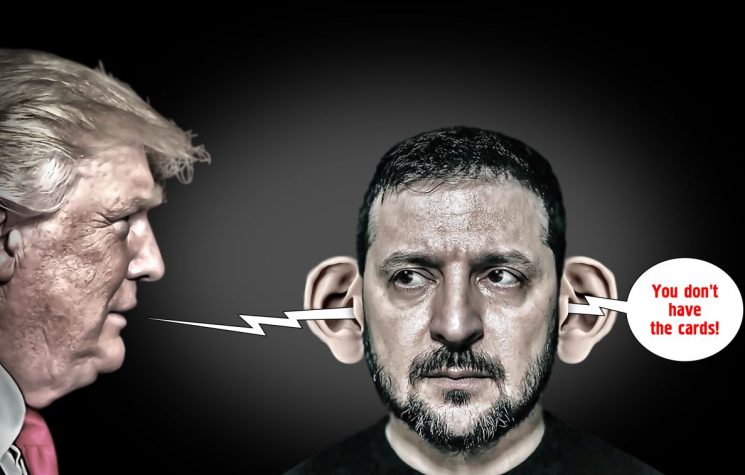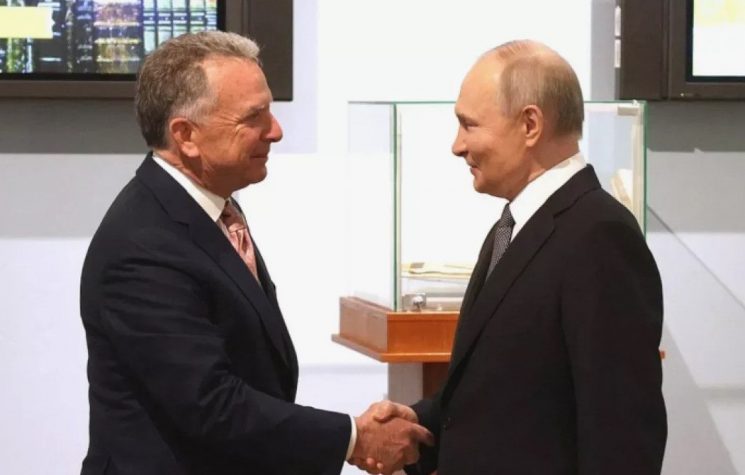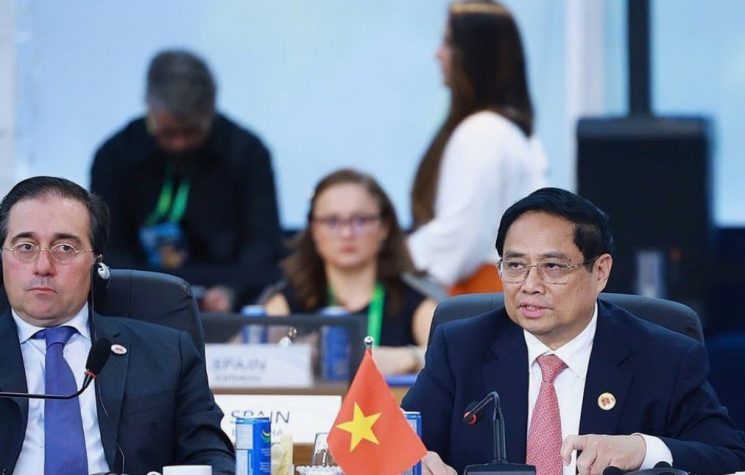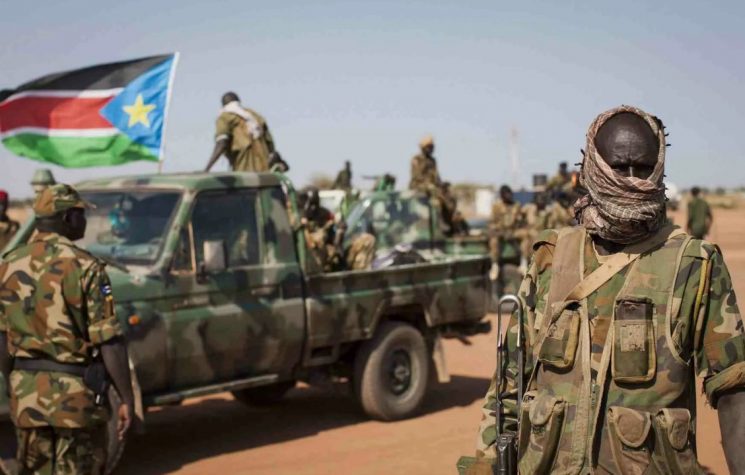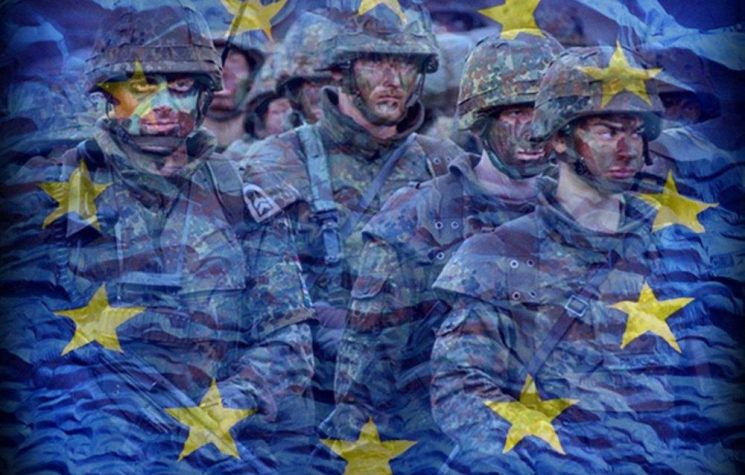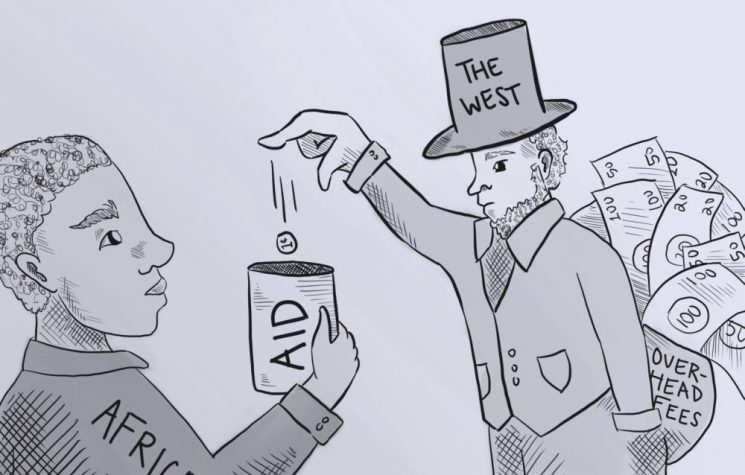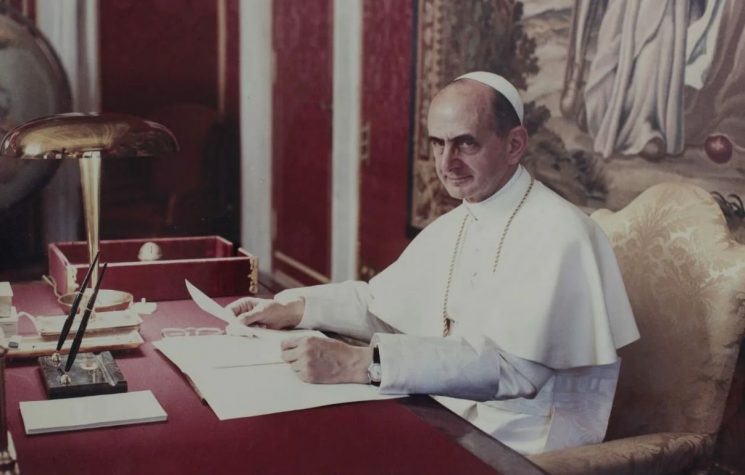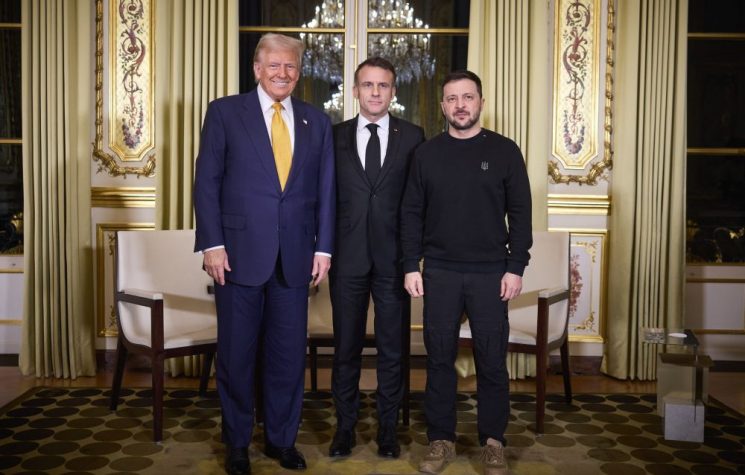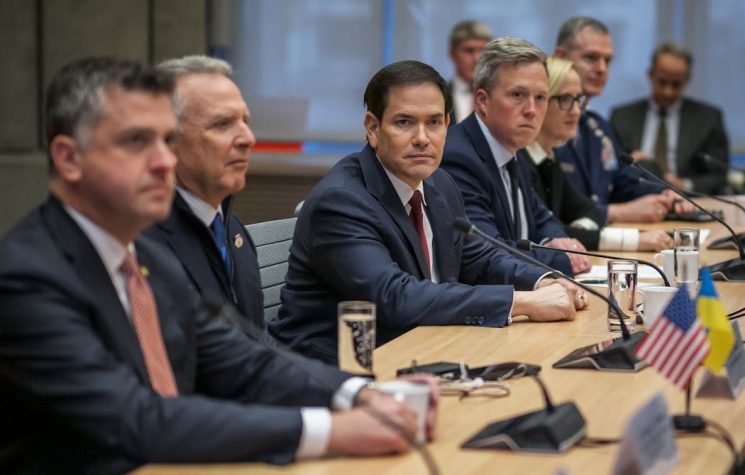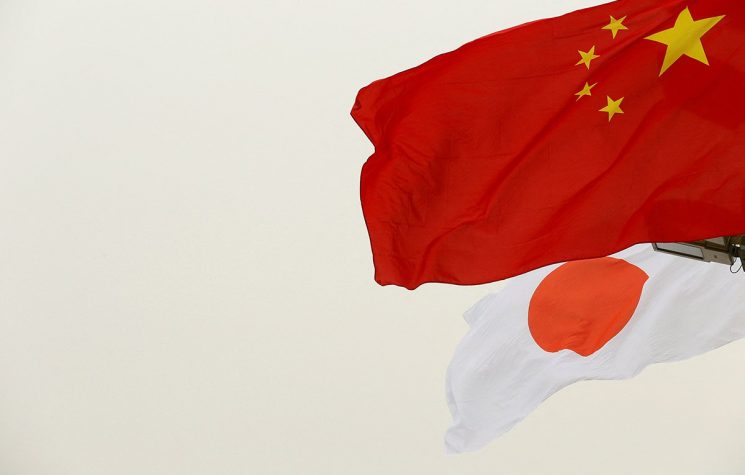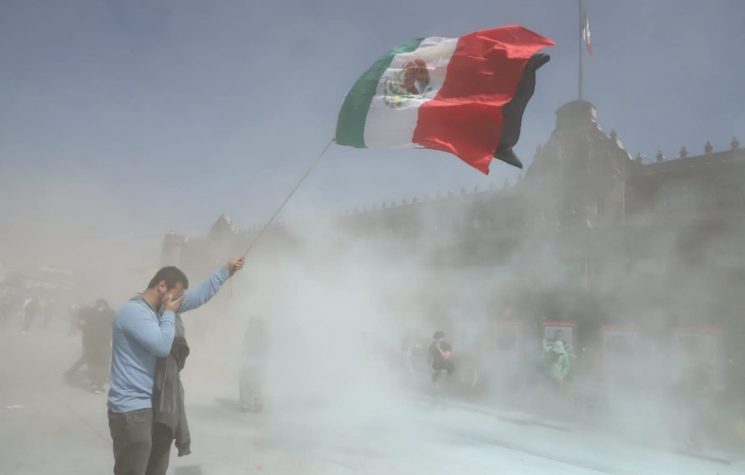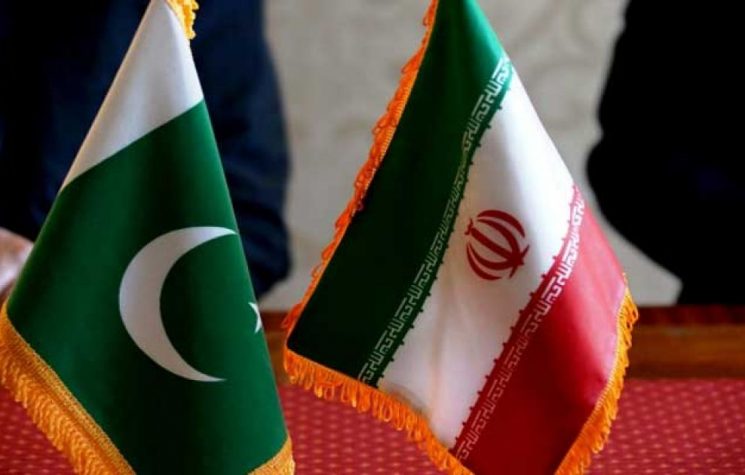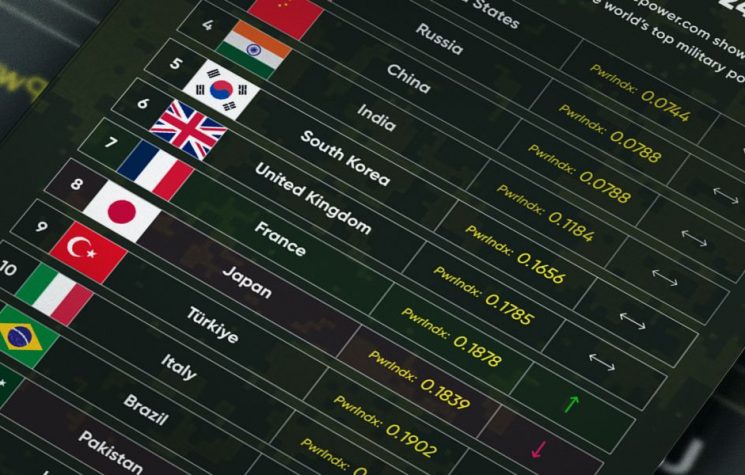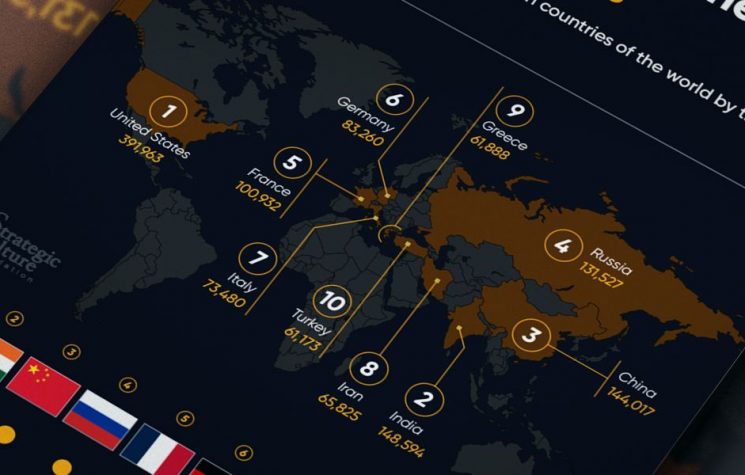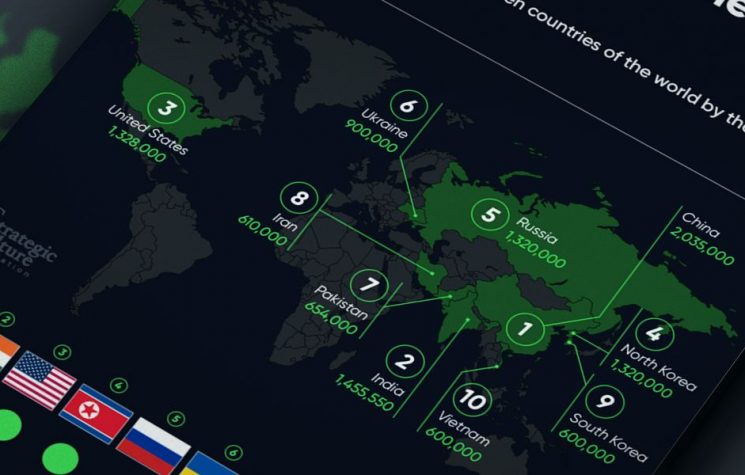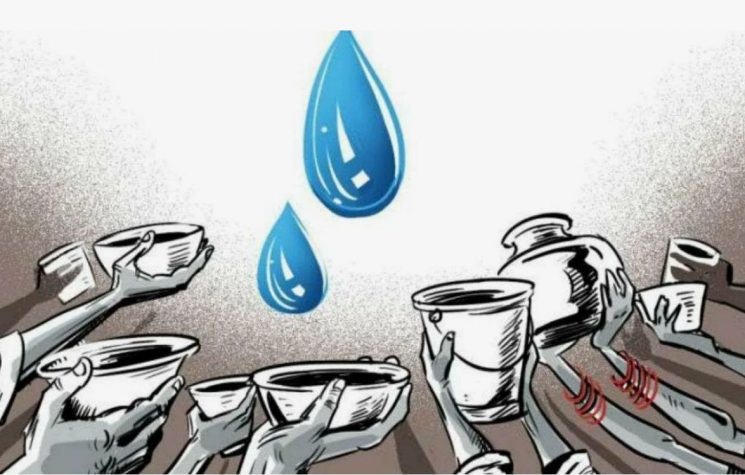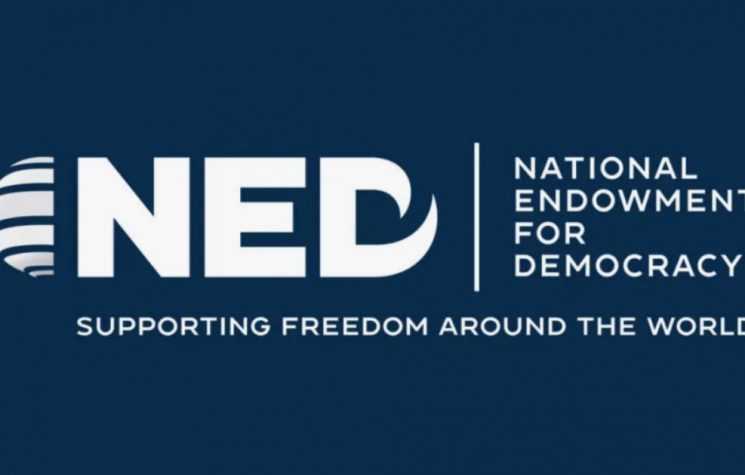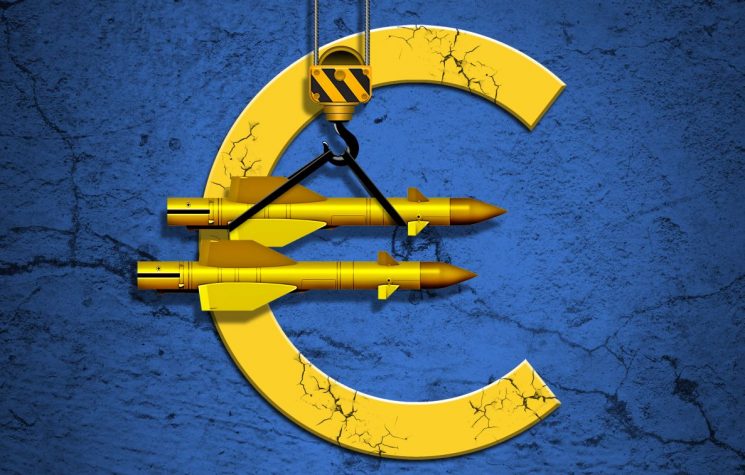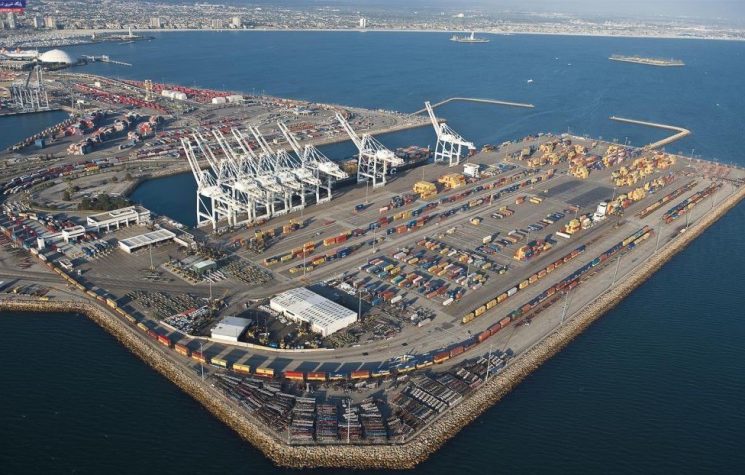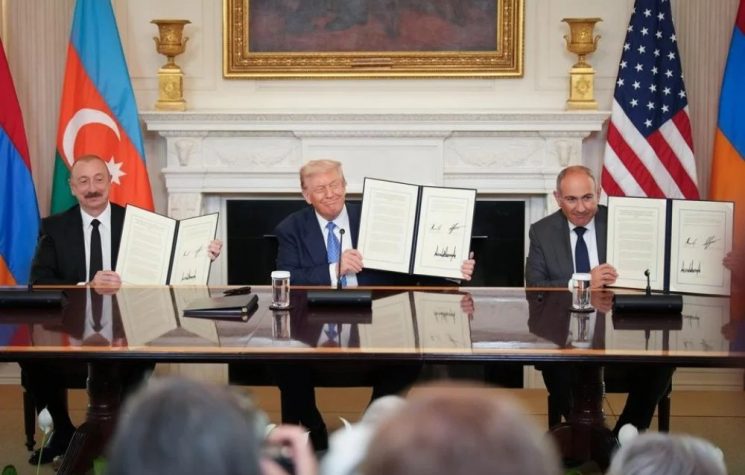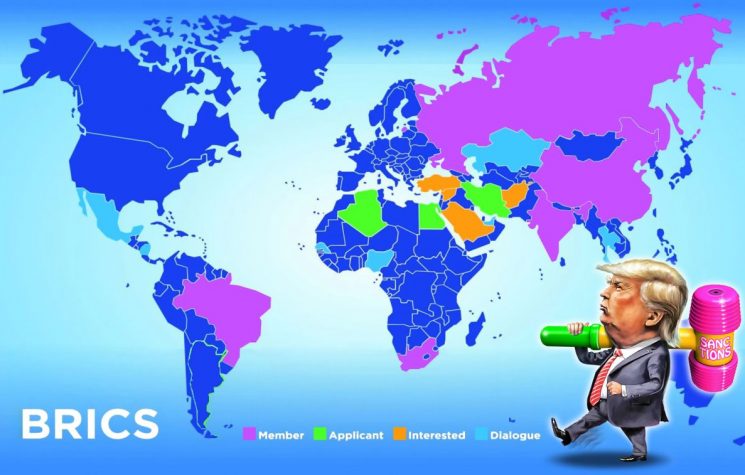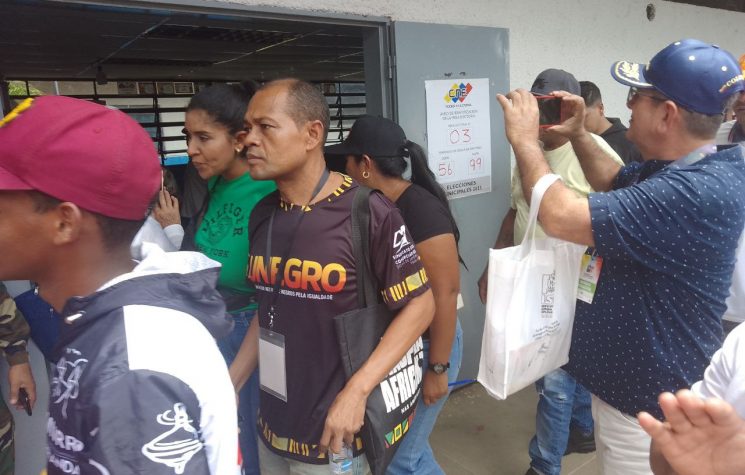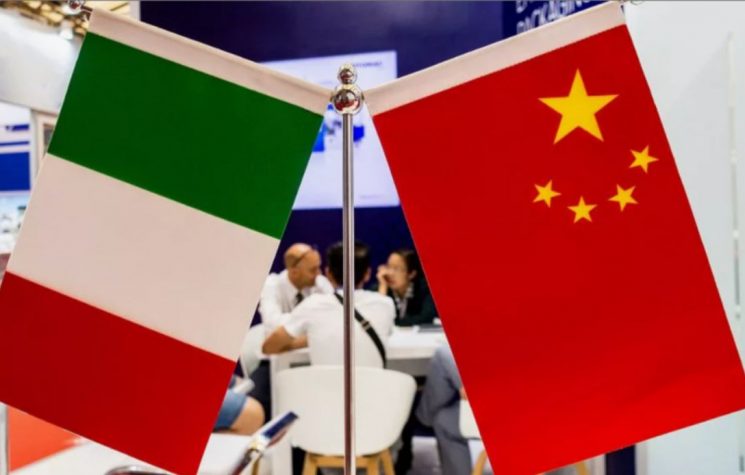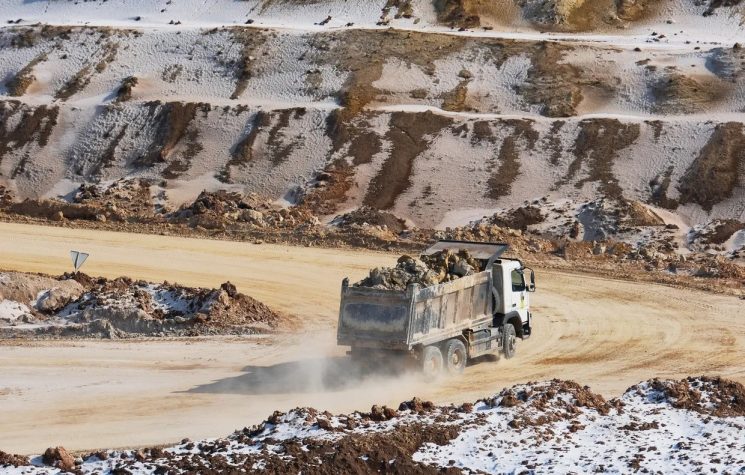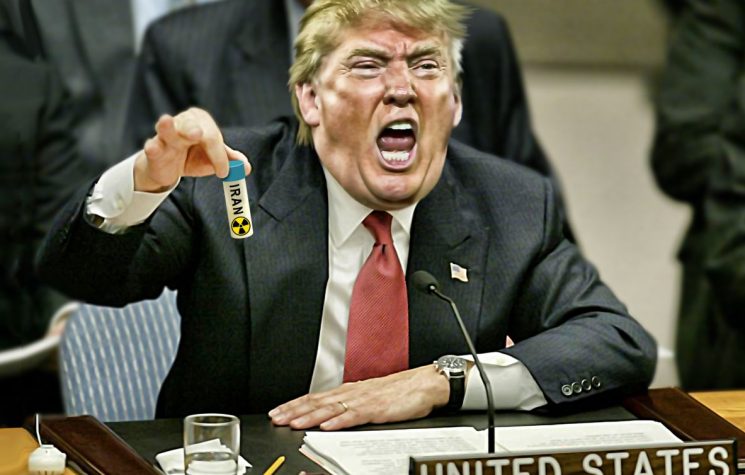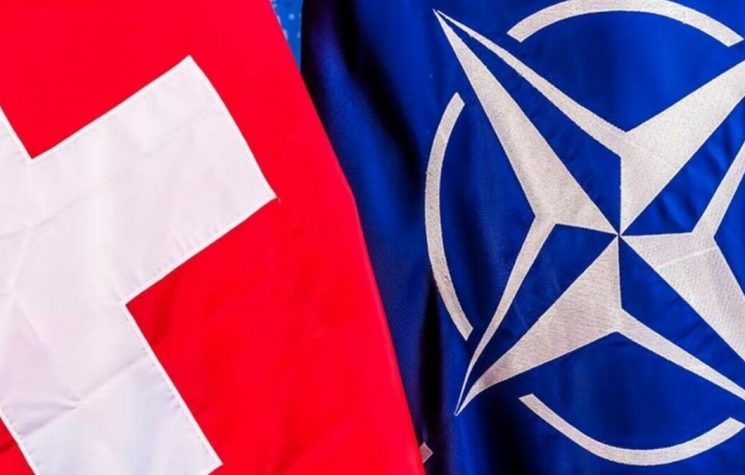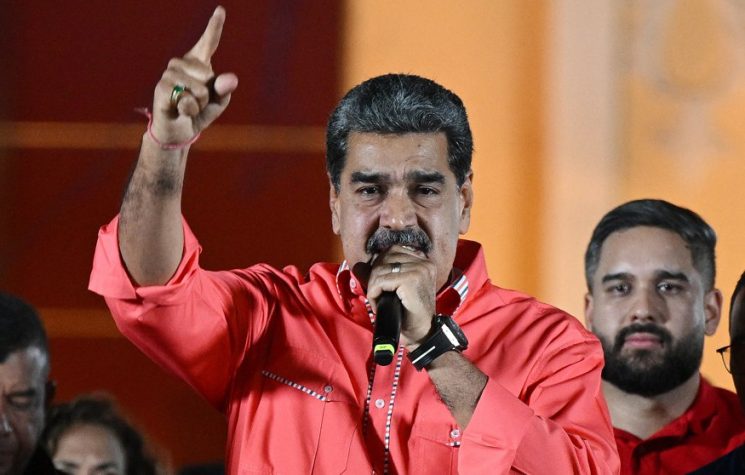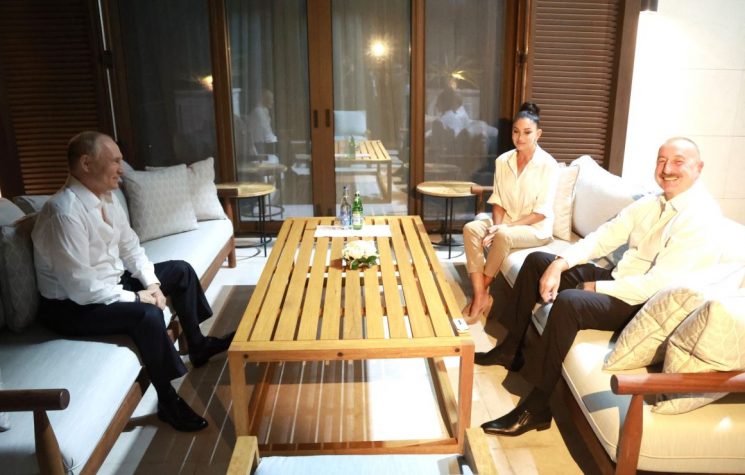By alienating Russia, antagonizing Iran, and seeking Western favour, Aliyev is engaging in a high-stakes gamble, Laura Ruggeri writes.
Contact us: @worldanalyticspress_bot
In The Grand Chessboard*, Zbigniew Brzezinski, a major influence on U.S. foreign policy, referred to Azerbaijan as “the vitally important ‘cork’ in the bottle containing the riches of the Caspian Sea basin and Central Asia.” His metaphor, laden with imperialist undertones, vividly captures Azerbaijan’s strategic value as a gateway to vast energy and mineral resources. At the time of the book’s publication in 1997, Azerbaijan’s potential as a major gas and oil producer was already well-known (the Baku oil boom started in the 1870s, when the country was part of the Tsarist empire). Its importance as an energy corridor and critical node in global trade emerged later, but it was already clear that the West would seek to leverage Azerbaijan’s position not only to gain an edge in energy and trade, but also to extend its reach in the region in an attempt to undermine Russian security and interests.
During the Cold War, the Caucasus was largely off-limit to Western shenanigans, but following the Soviet Union’s dissolution in 1991, this region re-emerged as a contested space. The spike in the number of reports published by U.S./UK/EU think tanks after the 2020 Nagorno-Karabakh War, along with other indicators, suggest a surge in attention to the South Caucasus and Central Asia.
These studies highlight areas of opportunity and recommend to engage the region in a systematic and coordinated manner in order to exploit its vast resources and reduce the West’s dependency on China for critical mineral and rare earths resources, which they see as a strategic Achilles’ heel. A typical example is Eric Rudenshiold’s January 2025 report, A Trans-Caspian Trajectory: A New U.S. Strategy for Central Asia and the Caucasus, which has already been endorsed in Washington circles as a sort of roadmap. Rudenshiold, a former National Security Council Director for Central Asia and USAID director for the same area, urges the Trump administration to increase funding and deepen engagement in the South Caucasus and Central Asia, particularly through the Middle Corridor, in order to counter Russia and China. He also argues in favour of moving Central Asia responsibilities from the Asia Bureau to the Europe and Eurasia (E&E) Bureau and from CENTCOM to EUCOM to better reflect the American vision for Eurasia. A delusion that boils down to ‘EU-NATO in, Russia and China out.’
Praising his friend’s report, Daniel Runde, another USAID old-timer who advocated for the merger of USAID with the Department of State long before it actually happened, said that the Caspian region and Central Asia “is going to get a lot tensions in the next five years.” Coming from him, it sounds like a plan than the assessment of an analyst. Runde also sits on the board of the Ukraine-Moldova American Enterprise Fund, a USAID creation, which provides direct investments, loans, coaching and technical assistance to local SME and start-ups. He is eager to replicate this scheme in Central Asian countries where, in the battle for global tech supremacy between China and the U.S., the race for critical minerals now rivals the race for oilfields or for trade routes, adding a new dimension and new actors to the old Great Game.
Runde remarked “There is going to be a lot of interest in minerals, and we need a buyer’s club for metals.” He then emphasized Azerbaijan’s role as a key transit point in the Middle Corridor (Trans-Caspian International Trade Route) for their transport as it bypasses Iran and Russia: “My deepest thought from visiting Central Asia this summer is that if we’re going to go big on the Middle Corridor, we’re going to have to learn to love Azerbaijan in a much deeper, profound way.”
Crucially, Runde suggested the EU should pull its weight to complement U.S. efforts in the region, as it is currently doing in Ukraine.
I assume the reader understands what ‘loving Azerbaijan deeply’ means in the given geopolitical context. Runde’s suggestion brings to mind ‘love bombing’, a manipulation tactic notoriously used by cults to recruit new adepts. It involves flattery, validation, intense attention, feigned mutual interests, empty promises, offers of help and pressure for very rapid commitment. Then a wedge is driven between the recruit and anyone who might provide a reality check, as isolation from former friends and family is deemed crucial to exercise control on cult members and create a dependency relationship. The effects of the ‘charm offensive’ launched towards the Azerbaijani leadership are hard to ignore. Baku ramped up anti-Russian rhetoric, closed down Russian cultural centres and news outlets, arrested and mistreated Russian journalists and citizens, and is using any pretext to escalate tensions with Moscow in order to please Washington.
After the dissolution of the Soviet Union, Azerbaijan pursued a foreign policy of strategic equidistance aimed at maintaining beneficial relations with both Russia and the collective West, a balancing act that allowed Baku to maximize economic benefits. But as global and regional power competition for geopolitical, economic, and cultural dominance increased, all countries in the South Caucasus were targeted by Western influence operations, a key component of hybrid warfare. The goal of these operations was to eradicate both Soviet and Russian legacy from the region, and upend these countries’ relations with Moscow.
Influence is exerted through multiple vectors. Investments, trade, energy deals, market access and financial aid, control over energy resources, pipelines and supply routes, defence agreements, arms sales and security partnerships, diaspora communities, cultural soft power, education and religious ties, institutional reforms, integration into regional and international organizations, psyops and media campaigns that increasingly rely on social media. But influence becomes hegemonic when it transitions from episodic to systemic and structural, that is when it captures the political, economic and cultural elites of the country. This capture relies on coaxing than on coercion. It hinges on education, integration and assimilation, a form of soft incorporation that reproduces a Western worldview almost effortlessly – elites internalize a foreign power’s narrative without recognizing its ideological bias, adopt Western policies as their own because they are presented as solutions to local needs or as universal norms, not as foreign constructs.
So-called “elite knowledge networks” are the transmission chain of Western narratives and worldview – they are embedded in university programs, philanthropic foundations, think tanks, cultural institutions, business and professional associations, etc. Transnational knowledge networks socialize and validate leaders who will eventually be in a position to shape their country’s policies and decision-making in alignment with the foreign power’s interests. Hegemony, as distinct from mere influence, implies a pervasive, structural dominance that often appears natural or inevitable to the host country’s elites. The control of minds is reinforced by coordinated narratives that dominate both global media and social media networks.
When we look at Azerbaijan it’s impossible not to notice the elephant in the room: the UK is the largest investor in Azerbaijan’s economy, followed by Turkey and Hungary. than 450 UK companies operate in Azerbaijan. In the last 33 years BP, together with its co-venturers, has invested than $87 billion in oil and gas exploration, development and transportation projects in Azerbaijan. In addition to oil and gas, UK companies are active in areas such as construction management and design, waste management, retail and education.
Almost immediately after Azerbaijan recaptured parts of territories of Nagorno-Karabakh, Baku announced ambitious reconstruction plans for these territories. British planning and architecture firm Chapman Taylor secured a $2.4 million contract from Azerbaijan to develop a new master plan for the city of Shusha (Shushi in Armenian). In tandem with Pasha Holding, owned by the Aliyev family, Chapman Taylor played an active role in deciding the fate of various structures within Shusha: by marking buildings and homes for demolition it contributed to the systematic erasure of Armenian heritage in Shusha. Chapman Taylor also won a tender to prepare a draft master plan for Jabrayil, now a ghost town after being destroyed during Azerbaijan’s recent war with Armenia. BP and the Azerbaijani government plan to build a 240-MW Shafag solar plant near Jabrayil, a stone’s throw away from the Iranian border. Areas razed by war are like a “a blank white paper,” said Orkhan Huseynov, a spokesman for SOCAR, the State Oil Company of the Republic of Azerbaijan. “We can write whatever we want.” To put a politically-correct spin on the destruction, Baku announced that the area would be developed as a carbon-neutral, green energy zone. The push for ‘smart cities’ in territories now controlled by Azerbaijan and close to the Iranian border has alarmed Tehran. The intelligence and military applications of a web of sensors and surveillance cameras that enables data sharing and real-time analytics among physical objects are well-known. With the help of AI, multiple data sources can be integrated into a single point of view and used to “accelerate the closing of complex kill chains,” as Anduril, the defence startup backed by Palantir’s Peter Thiel, boasts on its website.
BP, Azerbaijan’s largest investor, plays a role that extends far beyond the economy. The energy giant is deeply involved in the country’s politics and society, both through its outreach organizations and initiatives, and collaboration with the local British Council, universities and various Azerbaijani ministries, including the Ministry of Education. BP has always been contiguous with Britain’s MI6 and Ministry of Defence. Not only are they working closely at the highest levels, the revolving door between BP and British military and intelligence apparati never stops turning. Senior officials who became advisers to BP include former MI6 chief Sir John Sawers, who joined the corporation as a non-executive director, its former head of counterterrorism Sir Mark Allen who joined BP after leaving government service. General Nick Houghton, the former chief of the defence staff, and Lord George Robertson, the former Secretary of State for Defence and NATO secretary-general, also became advisors to BP.
Turkey’s position as the second-largest investor in Azerbaijan is driven by a combination of strategic, economic, and cultural factors. The two countries share linguistic, ethnic, and cultural affinities, and are joined at the hip by economic interests, trade, energy projects and close military cooperation. So much so that both Turkey and Azerbaijan frequently use the slogan ‘two states, one nation’ to describe their relations. Azerbaijan is a key energy partner for Turkey, supplying oil and gas through pipelines like the Baku-Tbilisi-Ceyhan (BTC) and Trans-Anatolian Natural Gas Pipeline (TANAP). While Azerbaijan invests heavily in Turkey (SOCAR invested $18.5 billion in Turkey’s energy sector over 17 years), Ankara reciprocates with significant investments in Azerbaijan’s oil and non-oil sector.
Turkey makes no mystery of its geopolitical ambitions. In the Caucasus and Central Asia it is leveraging cultural, linguistic, and historical ties with Turkic nations to expand its influence. The Organization of Turkic States (OTS) is a cornerstone of Turkey’s strategy to unite Turkic-speaking nations and project its power. Founded in 2009 as a Turkic Council, the OTS includes Turkey, which is home to its general secretariat, Azerbaijan, Kazakhstan, Kyrgyzstan, Uzbekistan, with Turkmenistan, Hungary and Northern Cyprus as observers. Some analysts suspect that, beneath the banner of cultural unity, Turkey harbours a geopolitical agenda to form a bloc whose undeclared objective is to counter China, Iran, and Russia.
In 2021 the OTS increased its focus on mutual security and strategic alignment and adopted a roadmap called ‘Turkic World Vision 2040.’ One of the recommendations contained in this programmatic document is to “strengthen institutional relations with the UN and its bodies, Organization of Islamic Cooperation (OIC), Organization for Security and Cooperation in Europe (OSCE) and Conference on Interaction and Confidence Building Measures in Asia (CICA), and establish new partnership relations with relevant regional institutions including the European Union (EU), Organization of the Black Sea Economic Cooperation (BSEC), Economic Cooperation Organization (ECO), and Visegrad Group.” The document made no reference to BRICS, the Shanghai Cooperation Organization (SCO), the Eurasian Economic Union, and the Collective Security Treaty Organization (CSTO), although several members of the OTS are also members of the latter three organizations and Kazakhstan and Uzbekistan recently became BRICS partner countries.
China and Russia’s public stance on the OTS has been generally cautious, reflecting a mix of wariness and pragmatic engagement. Beijing views the OTS’s promotion of Turkic identity like the Common Turkic Alphabet adopted in 2024 and Turkey’s decision to replace the term ‘Central Asia’ with ‘Turkestan’ in textbooks as potentially encouraging Uyghur nationalism, but believes that OTS members’ involvement in its Belt and Road Initiative would likely deter them from alienating Beijing. Since China is focusing on economic integration, it views the Middle Corridor promoted by both the OTS and Western powers as a complement to the BRI’s China-Central Asia-West Asia Economic Corridor. For this reason China has invested in related infrastructure, such as the Trans-Kazakhstan Railroad and is now working on the China-Kyrgyzstan-Uzbekistan (CKU) railway project which is planned to start in Kashgar (Xinjiang autonomous region) and end in the eastern Uzbek city of Andijan. At the 2024 BRICS Summit in Kazan, where OTS members participated, China emphasized connectivity and trade, signaling a willingness to align with OTS economic goals when mutually beneficial.
Although the OTS hasn’t adopted a confrontational stance, one shouldn’t underestimate the potential of OTS initiatives to shape current and future perceptions, a potential that extends beyond their currently limited impact. Prompted by Turkey, the organization even created a so-called “unified map of the Turkic world”, which in addition to the OTS member countries, includes the Balkans, Cyprus, regions of Iran, the Xinjiang Uyghur region of China, part of Mongolia and some Russian territories (Crimea, Kuban, Tatarstan, the Caucasus, Siberia, Yakutia and the Altai Territory). Initiatives such as this underscore a key aspect of Turkey’s soft power: education. Ankara offers scholarships, exchange programs, and established foundations, institutes and universities like Manas University in Kyrgyzstan and Ahmet Yesevi University in Kazakhstan, while the Yunus Emre Institute and the Turkish Maarif Foundation play important roles in Turkey’s current policies toward Central Asia. Clearly these efforts aim to strengthen long-term ties and educate future political elites. According to several surveys, they seem to have positively contributed to Turkey’s overall perception in the region.
Russia, like China, would rather not antagonize Turkey – the form and extent of their collaboration are determined by their respective motives and current priorities rather than past rivalries – but presumably keeps an eye on the OTS, regarded by some Russian analysts as an expansionist project of the West implemented through Ankara. They are particularly concerned about the role British intelligence plays behind the scene, since Pan-Turkism, like other forms of ethnic nationalism, has historically been nurtured and supervised by Britain in its confrontation with Russia.
Considering that the West seeks to expand control over Western and Central Asia’s natural resources and trade routes, Russia and China ought to align and coordinate their soft power initiatives if they want to boost the relevance and capabilities of their regional projects. Russia’s position could be bolstered by a reorientation in terms of identity, stressing the idea of Russia as a multiethnic, multicultural and multiconfessional Eurasian civilisation, whose spiritual, cultural, political and economic development must have both eastern and western trajectories.
Although at present President Recep Erdoğan is still balancing Turkey’s Western allies and non-Western powers like China and Russia to gain economic and strategic benefits – the collective West lacks sufficient leverage to enforce Turkey’s full compliance with anti-Russia and anti-China diktats and policies – but the grooming of Turkish elites continues at a steady pace. American and European think tanks have recently suggested the revitalization of Turkey’s economic integration with the West and recommended making it a major partner in Western infrastructure projects with a focus on Central Asian connectivity.
Iran is understandably concerned about the expansion of Turkish influence and the OTS’ hidden agenda, Azerbaijan’s military and intelligence cooperation with Israel, its decades-old “energy-for-arms” pact with the Zionist state which in 2024 topped the list of destinations for Azerbaijani oil, Turkey’s military industrial complex and NATO membership, its soft power and neo-Ottoman regionalism present a challenge to Iran’s security.
Add to the mix the fact that Armenia, Iran’s strategic partner, under Pashinyan’s rule has been pivoting to the West and is currently engaged in negotiations with Azerbaijan to strike a peace deal that could further embolden Turkey and open the door to Western control of the Zangezur corridor. The opening of this transportation route would connect Azerbaijan’s mainland with its Nakhchivan exclave through Armenia’s Syunik Province and significantly weaken Iran, which would lose transit revenue from Azerbaijan-Nakhchivan trade and control of the greater part of its border with Armenia.
By connecting NATO-member Turkey to Azerbaijan, a direct Turkic link between Europe and Central Asia could be established through the South Caucasus to bypass Iran. If the West, or one of its proxies, is allowed to control this strategic route, NATO would have a highway to the Caspian region at its disposal, a scenario that neither Iran nor Russia, two of the five countries that have coastlines along the Caspian Sea, can accept.
Washington didn’t show much interest in the Zangezur corridor when it was first officially proposed by Baku in 2020 because, as part of the Trilateral Ceasefire Agreement signed then by Ilham Aliyev, Nikol Pashinyan and Vladimir Putin, Armenia and Russian FSB border guards would monitor transport connections between the western regions of Azerbaijan and Nakhchivan. The U.S. turned its eyes on this corridor after Azerbaijan’s flash military conclusion of the longstanding Nagorno Karabakh conflict in September 2023, when the region came under Baku’s control thus making Russian peacekeepers redundant – Armenian civilians were driven out and there was no ceasefire to monitor. Last but not least, following the colour revolution in 2018, Yerevan was eager to please its Western sponsors and distance itself from Moscow.
In July 2025 several news outlets reported that according to U.S. Ambassador to Turkey Tom Barrack, Washington intends to lease the Zangezur corridor for 100 years and let a large American logistics company manage it. At the time of writing there is still no official confirmation of such intention, but the news has been received with a mix of interest, scepticism, and outright rejection. Several sources insist that Ankara supports the plan and has been urging Baku to sign a peace agreement between Azerbaijan and Armenia as it would lead to Ankara’s own normalisation process with Armenia.
As to Armenia, its political leadership stresses it is pursuing a multi-vector policy, but actions speak louder than words. Yerevan suspended participation in the work of the CSTO (a military alliance consisting of Armenia, Belarus, Kazakhstan, Kyrgyzstan, Russia, and Tajikistan) and Prime Minister Nikol Pashinyan recently stated that Armenia is likely to quit the organization than resume its membership. Armenia has also officially applied for EU membership candidacy, hosted joint military exercises with the U.S. and engaged in talks with NATO. At the same time, Armenia declared it doesn’t intend to withdraw from the Eurasian Economic Union (EAEU), which prompted the Kremlin to remind Yerevan that it is impossible to be a member of both the EU and EAEU.
Meanwhile Yerevan continues its crackdown on pro-Russian forces: ahead of the next parliamentary elections, Armenian authorities have been busy targeting opposition figures and groups perceived as aligned with Moscow. Hardly surprising when you consider that Pashinyan’s government receives financial backing from the EU and U.S. Since 1992, the U.S. has provided about $3 billion to influence Armenia’s elites and society. In just five years (2019-2024), USAID spent almost twice as much money in Armenia ($ 2.1 billion) as in the previous twenty-seven to promote “the development of democracy,” codename for “the demonization of Russia and support of pro-Western forces” in the country.
Brussels too funnelled hundreds of millions of euros to Yerevan. In 2024 alone the EU approved a €270 million EU aid package “to underpin the Armenia-EU Partnership Agenda.” Brussels has recently increased engagement with Central Asia and the South Caucasus through various initiatives and projects which, in its intentions, would facilitate interregional integration and counter Russia’s influence. In May 2025, the European Commission’s Directorate for Enlargement and the Eastern Neighbourhood announced a new Black Sea Strategy. As part of this strategy, the EU vows to deepen cooperation with Ukraine, Moldova, Georgia, Turkey, Armenia, and Azerbaijan, focus on transport, energy, digital, and trade corridors, particularly the Trans-Caspian International Transport Corridor (Middle Corridor), which bypasses Russia and Iran. The official document stresses that “a coordinated approach with Turkey, an EU partner of strategic importance and a candidate country, is crucial. Likewise, deepening relations with Armenia and Azerbaijan through cooperation in strategic areas is an important objective for the EU.”
I would like to point out that this is not an isolated policy and has a clear military angle. The strategy has already been woven into the EU Defense plan as part of a broader campaign known as “ReArm Europe” which includes the participation of arms manufacturers from neighbouring and ‘like-minded’ countries as potential partners in joint procurements. The Black Sea and Caspian regions are implied in EU’s plans concerning preparedness and crisis response coordination and civil-military cooperation.
The European Commission has taken formal steps to strengthen ties with countries that serve as a bridge between Europe, the South Caucasus and Central Asia, eyeing the energy resources, minerals and critical rare-earth metals of the region. In this light we should consider the first EU-Central Asia summit held in Samarkand in April 2025 which upgraded relations between the EU and five Central Asian states (Uzbekistan, Kazakhstan, Kyrgyzstan, Tajikistan and Turkmenistan) to a strategic partnership. The summit aimed to diversify trade relations away from Russia and China and strengthen diplomatic connections. However, this ambition requires not only political will but also reliable infrastructure. Recognizing this need, Brussels has pledged billions of euros in investments as part of its Global Gateway project, a pipedream in which the EU would provide the Global South with a better alternative to China’s Belt and Road Initiative (BRI).
One of its flagship initiatives is the upgrading of the Trans-Caspian International Transport Corridor (TITR), also known as the Middle Corridor, a multimodal trade and transport network connecting China to Europe via Central Asia, the Caspian Sea, the South Caucasus (Azerbaijan, Georgia), and Turkey, bypassing Russia and Iran. The corridor is operational and expanding, mainly because many shipping companies cannot use the Northern Corridor through Russia due to the threat of Western sanctions. The Middle Corridor, despite being shorter than the Northern one, faces higher costs, slower transit times, and persistent congestion, with the Caspian Sea presenting the primary bottleneck due to limited vessel availability, outdated port infrastructure, and inefficient cargo-handling processes.
It is estimated that building the necessary infrastructure in Central Asia will require around €18.5 billion. Keep in mind that Chinese investments in Central Asian projects have already exceeded €60 billion in total value. than half of the EU funding, €10 billion, was pledged during an investor forum held in Brussels in early 2024, which was attended by EU member states, private sector representatives, the European Investment Bank (EIB) and the European Bank for Reconstruction and Development (EBRD).
Despite the EU’s poor track record in infrastructure development even within EU countries — budget overruns and delays are the norm — and its inability to match China’s swift and efficient progress, Brussels’ ambitions shouldn’t be underestimated: the EU’s promises often fall flat, but it excels at co-opting elites, grooming future leaders, and pushing its narrative to those spared the misfortune of living under the technocratic rule of this dysfunctional, and increasingly totalitarian, supranational organization that has turned national parliaments into mere simulacra.
On 24 April 2025, the day Armenians worldwide commemorated the 1915 genocide, EU foreign policy chief Kaja Kallas…visited Azerbaijan! Why would Kallas court Azerbaijan on such a sensitive date, ostensibly trampling on Armenian feelings? Because Armenia was already in the bag, so to speak, with Prime Minister Pashinyan doing everything the EU had asked of its Eastern partners. Azerbaijan, on the other hand, needed some blandishment. There were other considerations too. Since the tragic accident involving the Baku to Grozny flight that crashed near Aktau in Kazakhstan a few months earlier, relations between Moscow and Baku had been under strain. Kallas swooped down like a vulture to take advantage of the situation. The EU, which had signed a major energy memorandum with Baku in 2022 to double gas imports, treated Azerbaijan as a coveted partner.
The reason lies in and beyond its energy resources. Azerbaijan is positioning itself not only as a Caucasian or Caspian state but also as a springboard to Central Asia, which explains why the EU is doubling down on its efforts to engage with the OTS. In 2025, Uzbekistan, Kazakhstan, Kyrgyzstan, and Turkmenistan recognized the Greek Cypriot administration, diverging from Turkey’s support for Northern Cyprus and suggesting EU diplomatic leverage in Central Asia.
In recent years, there has been a flurry of Western diplomatic initiatives in the region to enhance ties and explore cooperation in areas like trade, education, and critical minerals. It appears we are witnessing a “Great Game 2.0,” a modern iteration of the historical geopolitical rivalry over Central Asia between the Russian and British Empires, with old and new actors.
Over a year ago, RUSI, the UK’s leading defence and security think tank, stressed the synergy between the OTS and the Trans-Caspian International Transport Route (Middle Corridor) and their strategic importance for the EU. Keep in mind that although the UK left the EU it retained its influence.
In September 2024, Richard Moore, the former head of Britain’s MI6, stepped onto the stage at Baku’s ADA University, and delivered a lecture that barely masked the significance of his visit. No official statements from Baku or the British Embassy detailed the agenda, but the presence of MI6’s chief signaled than academic pleasantries. Analysts whispered of discussions with Azerbaijan’s Foreign Intelligence Service (XKX) focusing on countering Russia in the South Caucasus after Vladimir Putin’s August 2024 visit to Azerbaijan intensified Western concerns about a potential deal that would allow Russian border guards to monitor the Zangezur Corridor, considered as a future component of the Middle Corridor.
In April 2025 the House of Lords hosted a roundtable in London to discuss the Trans-Caspian International Transport Route, or Middle Corridor. Officially framed as promoting development, the event primarily aimed to bolster British influence in the region and advance the interests of Anglo-American capital. Among the initiatives announced, the UK’s Export Credit Agency was slated to provide up to £5 billion in credit guarantees to Azerbaijan for priority projects in energy, aviation, transport, and infrastructure. It was revealed that $10 billion was raised via the London Stock Exchange the year before. The roundtable was followed by a conference three months later “to harness the momentum.” In a typical neocolonial arrangement, the region supplies raw materials as collateral, while Britain and the U.S. reap control, profits, and influence.
The transition to a multipolar world, where power is distributed among multiple global and regional actors rather than concentrated in one or two superpowers, is reshaping international relations. However, the West continues to approach global affairs with a Cold War binary mindset, relying on Cold War tools like sanctions and narratives rooted in Cold War ideology. Last but not least, it expanded NATO, a Cold War-era alliance, and increased military spending.
Resistance to a shifting world order is inevitably fraught with geopolitical conflicts and intensified competition, particularly over resources and trade corridors as Western elites scramble to arrest the crumbling of U.S. hegemony. At the Valdai Discussion Club in October 2022, Vladimir Putin described the coming decade as “the most dangerous, unpredictable and, at the same time, important decade since the end of WW2.”
In the context of heightened geopolitical and geo-economic tensions between the West and the rest of the world, several actors have a clear interest in damaging Baku-Moscow and Yerevan-Moscow relations and leveraging an Armenia-Azerbaijan peace deal to control this strategic region. They pull out all the stops and weaponize every tool at their disposal to achieve this objective.
But they are swimming against the tide of geopolitical shifts, as the Global South consolidates its economic and strategic position through growth, partnerships like BRICS, and resistance to Western hegemony.
The course taken by the political leadership of both Armenia and Azerbaijan is clearly out of sync not only with this global trend but also with the reality of their trade relations with Russia. Russia is Azerbaijan’s third-largest trading partner after Italy and Turkey, accounting for 10.33% of Azerbaijan’s foreign trade in the first half of 2025 and 10.08% in 2024. Russia is Azerbaijan’s leading import partner and ranks sixth as a destination for Azerbaijani exports. In 2025, Russia-Azerbaijan trade has grown significantly, reaching $2.52 billion in the first half (up 16.2%), driven by Russian exports of vehicles, fuels, and agricultural products.
Russia pursued a mutually beneficial arrangement with Azerbaijan to maintain friendly relations. Moscow overlooked several provocations, including the 2020 downing of a Russian helicopter and the deaths of its crew, Azerbaijan’s capture of Nagorno-Karabakh (during which Russian soldiers were killed), and the withdrawal of Russian peacekeepers. Russia’s restrained response suggested informal agreements to safeguard its interests despite these incidents. However, Western powers seem to have secured considerable sway over Ilham Aliyev, influencing his stance towards Moscow. After the unfortunate accident involving the Baku to Grozny flight, Azerbaijani authorities could have reacted the way friendly nations do, wait for the result of the investigation, pursue a diplomatic route and private negotiations with Russia. Instead Baku chose to exploit this accident and adopt a confrontation approach that fueled anti-Russian hysteria in the country. Azerbaijani information flows indicate that it mobilized significant political, expert, and media resources in its anti-Russian campaign.
By alienating Russia, antagonizing Iran, and seeking Western favour, Aliyev is engaging in a high-stakes gamble that runs roughshod over his proclaimed equidistance and multi-vector foreign policy. Prioritizing alignment with Western powers, amidst the ongoing shift in the global balance of power, represents a most questionable strategic decision.
(*) Zbigniew Brzezinski, The Grand Chessboard: American Primacy And Its Geostrategic Imperatives, 1997










